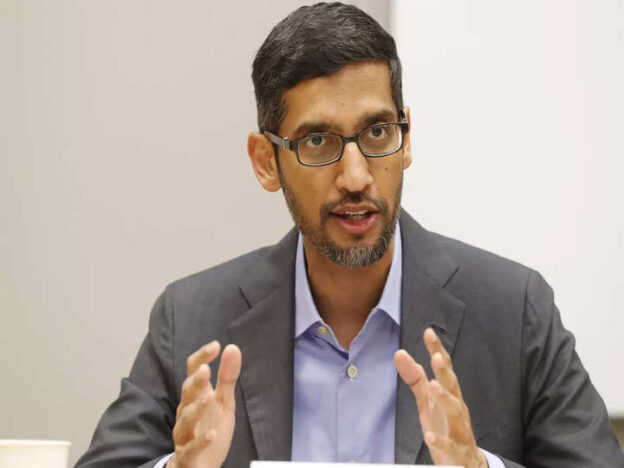Editor’s note: Today at Sustainable with Google, CEO Sundar Pichai opened the event with remarks about Google’s progress to work toward a sustainable future. Below is a transcript of his pre-recorded remarks, and you can read more about everything we announced at the event.
Hi everyone. Thanks so much for joining us. Whether you’re in Brussels, or joining virtually, we’re grateful for your partnership.
Fighting climate change is humanity’s next big moonshot. And as with any moonshot, we’re going to have to answer some big questions to get there.
At Google, we’ve been asking these questions for 25 years: Can a company at our scale operate on 24/7 carbon-free energy? How can we use technology to help others achieve their climate goals, and make more sustainable choices?
We continue to make progress across all of these areas. For example, behind me is our Bay View campus in California, where buildings are powered by wind, solar and geothermal.
And in Belgium, we’re on track to operate at or near 80% carbon-free energy in 2024.
The biggest question is still ahead: can we leave a healthy planet for future generations? I believe the answer is yes.
That’s in part because of the progress being made globally to transition to a sustainable future.
We’ve worked hard to lead by example. We began purchasing clean energy in 2010. By 2017, all our energy purchases were matched with 100% renewable energy. And today, two-thirds of the energy used for our offices and data centers is 24/7 carbon free. Our goal is to reach 100% by the end of the decade. We’re excited about the ways we can keep driving the energy transformation, through steps like our next-generation geothermal project in Nevada, which will be online soon.
We’re also harnessing AI for new, breakthrough solutions. For example, we recently shared research that will help airline partners use AI to decrease contrails, a major contributor to global warming.
AI powers Flood Hub, our system which can predict floods up to a week in advance.
It now covers more than 460 million people in 80 countries. And I’m excited to share that starting today: we’re expanding Flood Hub to the United States and Canada.
With the help of AI, a billion people have made more sustainable choices through our products.
For example, fuel-efficient routing in Google Maps has helped prevent more than 2.4 million metric tons of carbon emissions. That’s the equivalent of taking about 500,000 fuel-based cars off the road for an entire year.
And in partnership with local governments, we’re advancing Project Green Light. It uses AI to reduce stop-and-go traffic at intersections and reduce emissions. We’re now expanding this project to more than a dozen cities around the world, from Rio to Budapest.
Through our products, we want to help people, cities, and other partners collectively reduce 1 gigatonnes of carbon-equivalent emissions annually by 2030. That’s equal to the emissions of a major country like Japan.
We’ll continue sharing tools that help, from making the latest AI models available through Google Cloud to helping city governments understand and reduce their emissions with our Environmental Insights Explorer tool.
And we’ll keep asking the big questions to help build a more sustainable future, and work to find answers with all of you.
https://blog.google/inside-google/message-ceo/google-sustainable-future-global-progress/amp/





